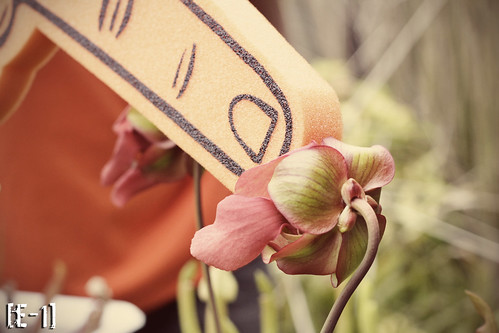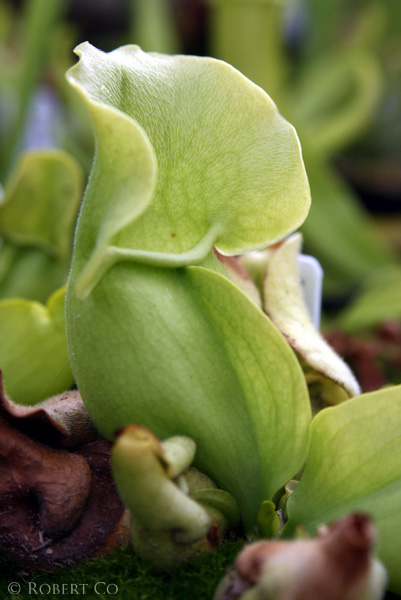Hope everyone is having a great weekend thus far! Let’s talk a little bit about sex today. Plant sex. Pollination! For those of you who didn’t see it in an earlier post, be sure to review Brooks Garcias pollination guide.
I love hybridizing Sarracenias. It’s this whole creative process that I find so enjoyable. See, ya got this one plant you really like, and want to combine characteristics from another plant ya really like — then you cross ’em and hope that the babies will have that combined characteristics from both parents for a bomb ass plant you’ll really jockin’. I am even working on quite a few hybrids that will take several generations to come to fruition. Me gots these crazy plant ideas that will take several crosses to create through the years. It’s all a creative genetic gamble, but that’s something that I find so fascinating about this process.
Just for easy digestion, I’ll break this subject up in several posts, so be sure to check back now and then on updates on this topic. Today, we’ll talk about some tools used to pollinate. For Sarracenia pollination, the goal is to get the pollen onto the stigma. Then ya hope and pray that the pollination takes successfully. The pollen can be from a different plant, or from its own self. The latter is referred to as “selfing” a plant. Now, keep in mind that everyone has their own way they prefer to do things, and I encourage you to try things on your own. Be creative!
Here’s a few tools that are used to apply pollen to the stigmas.

So, here are just a few tools:
Figure A. Q-tip
Figure B. Paint brush
Figure C. Toothpick
Figure D. Earwax pick
You notice that all these tools are small enough to get into the Sarracenia flower, scoop out, carry, then apply onto the target stigmas. I’ve used all these tools and have been successful. It’s all personal preference as far as what you want to use, and again – use what you feel is most comfortable for you.
That earwax pick (Figure D) is actually the one that I favor most right now. I was at Daiso (this rad Japanese dollar-fiddy store in Daly City, CA) a couple years ago and spotted this thing as I was wandering the aisles. See Figure D-1 below.

Figure D-1 – Ear Pick. Dude, so when I saw this I immediately thought Sarracenia pollination. And check out the packaging:
“For cleaning cleanly and refreshingly the earhole”
HA! I love that! So, I guess it’s not only great for cleaning cleanly and refreshingly the earhole, but it’s great for your Sarracenia hole too. The reason I like working with the refreshingly the earhole tool is because I find it’s efficient with pollen – something I’ll write about soon in an upcoming post.
Figure E below shows yet another pollination instrument that works just fine – the finger. Yes, finger. It’s perfectly acceptable to go finger your flower to pollinate.

Figure E – Finger
Ok, I’m a SF Giant’s fan (baseball team) if you probably haven’t figured out by now. See — In baseball, there’s pitchers. With Sarracenia, there’s pitchers. Get it — *PITCHER* plant?!? Bwahahah! Ok, that was my corny baseball/plant joke for the day… Uhm yeah…
Anyway, back to Sarracenia…
Using the finger works well on the plants that have the larger flowers (like Sarracenia flava, or Sarracenia leucophylla to name a couple) because it’s easier to get the finger into the Sarracenia hole. You then take the pollen that’s on said finger and apply to the target stigmas.

Figure E-1 – Finger pollination in the Sarracenia hole.

Figure E-2 – SF Giants Torture pollination.
Size does matter, and at times, you gotta just shove it in there and hope the successful pollination takes place. For those of you who are familiar with the SF Giant’s baseball “torture” way of the game, Figures E-1 and E-2 is illustrating SF Giant’s Sarracenia pollination torture. Hey, if it works for the team, then it works for the plant. 😉
So, this concludes todays pychobabble about pollination tools and stuff. Hope this helps and inspires some of you that are looking into getting into Sarracenia breeding. Word up, dudes.












